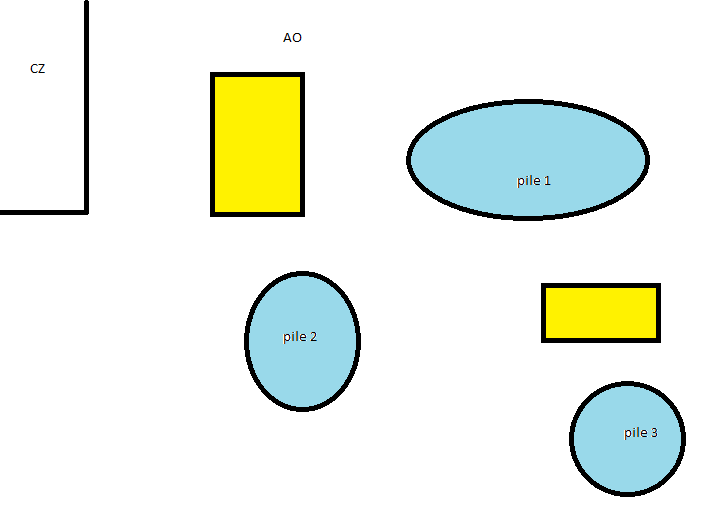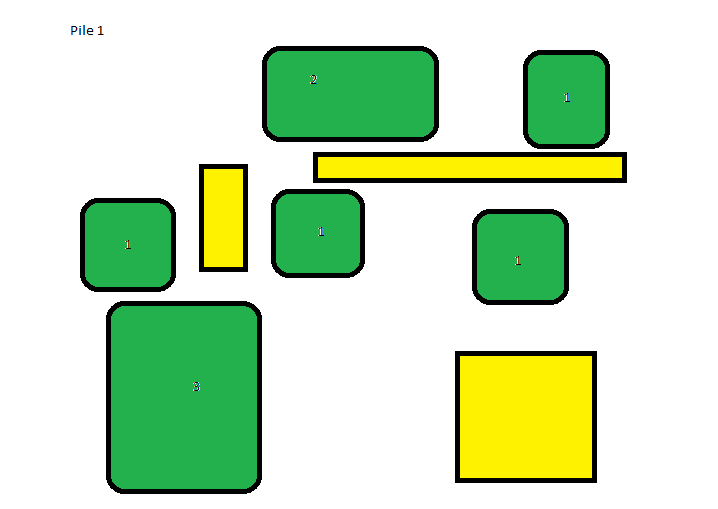Final scenario
The final scenario will consist of a controlled environment where the software will be tested. The environement will consist of a square area of operations (AO) bordered by a white line. Inside this AO several sizes and masses of material will be placed in groups. Using the software a number of freeduino based robots will be given the task to clear the AO by moving the materials to a specific part of the AO - the clear zone (CZ). As some materials can not be moved with only one of the robots cooperation is needed, therefore testing the swarm behaviour software. The main idea can be seen in the figures below:

Example overview of the test case with Area of Operation (AO), Clear Zone (CZ) and three piles.

Example of what pile 1 might look like. The numbers in the blocks indicate the number of robots necessary to move the block.
- The green shapes indicate pieces of material, the number inside shows how much robots are needed to move it outside of the box.
- The yellow shapes indicate obstacles which can't be moved, and therefore have to be evaded.
- The blue shapes indicate the piles (groups) of material
The reason we want to group the material in "piles" is that in a real rescue scenario, initially not all material will have to be cleared: only material that is blocking the way to victims, or preventing thorough search will need to be cleared. Usually this will mean clearing local concentrations, e.g. physical piles, of material rather than just lose pieces of material. Furthermore, this fits existing research on the topic better.
USE principles
Because the robots are tested in this scenario and not in a real disaster-environment, some USE aspects as mentioned in USE principles will not come to attention in this demonstration. Some USE aspects will definitely be taken into account for this demonstration.
- Care: As mentioned in USE principles, the robots have to treat the victims with care and therefore encounter them with limited speed. This will be taken into account in this final scenario. The robots will approach the objects slowly. Also the ramp in front of the robot will be covered with a soft material, so that the "victims" aren't in contact with hard metal.
- Efficiency: When the robots are not encountering an object, they will have a relatively higher speed to increase the efficiency of the search.
- Robustness: The robustness of the robots will not be tested in the scenario, since they won't get hit by anything, but the robots will still be designed to resist this. For instance with the track tires, as shown in Freeduino based robots.
- Control: The robots will be programmed in such a way that the user is able to terminate any activity at any time.
Back to: PRE2015_2_Groep1